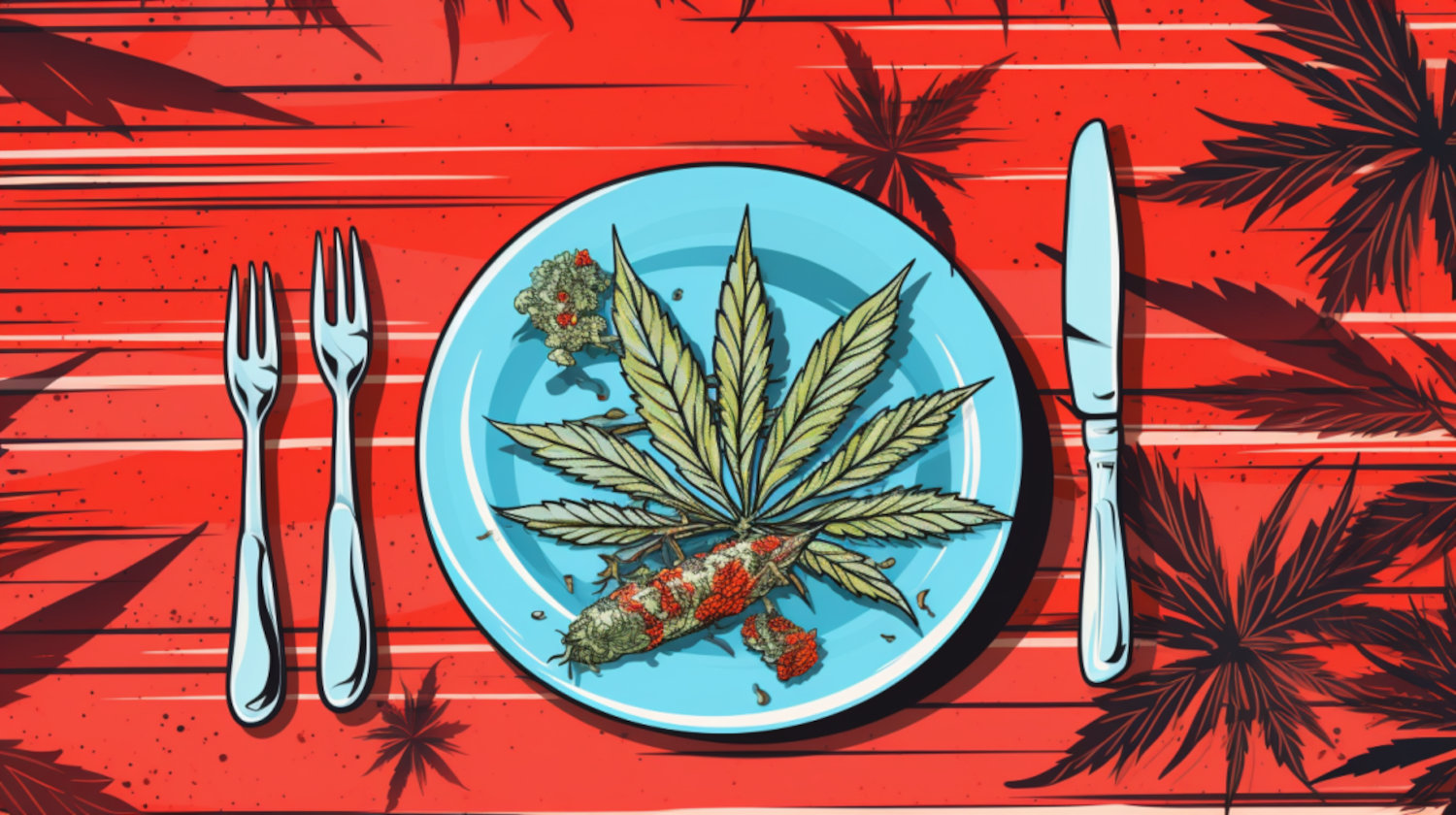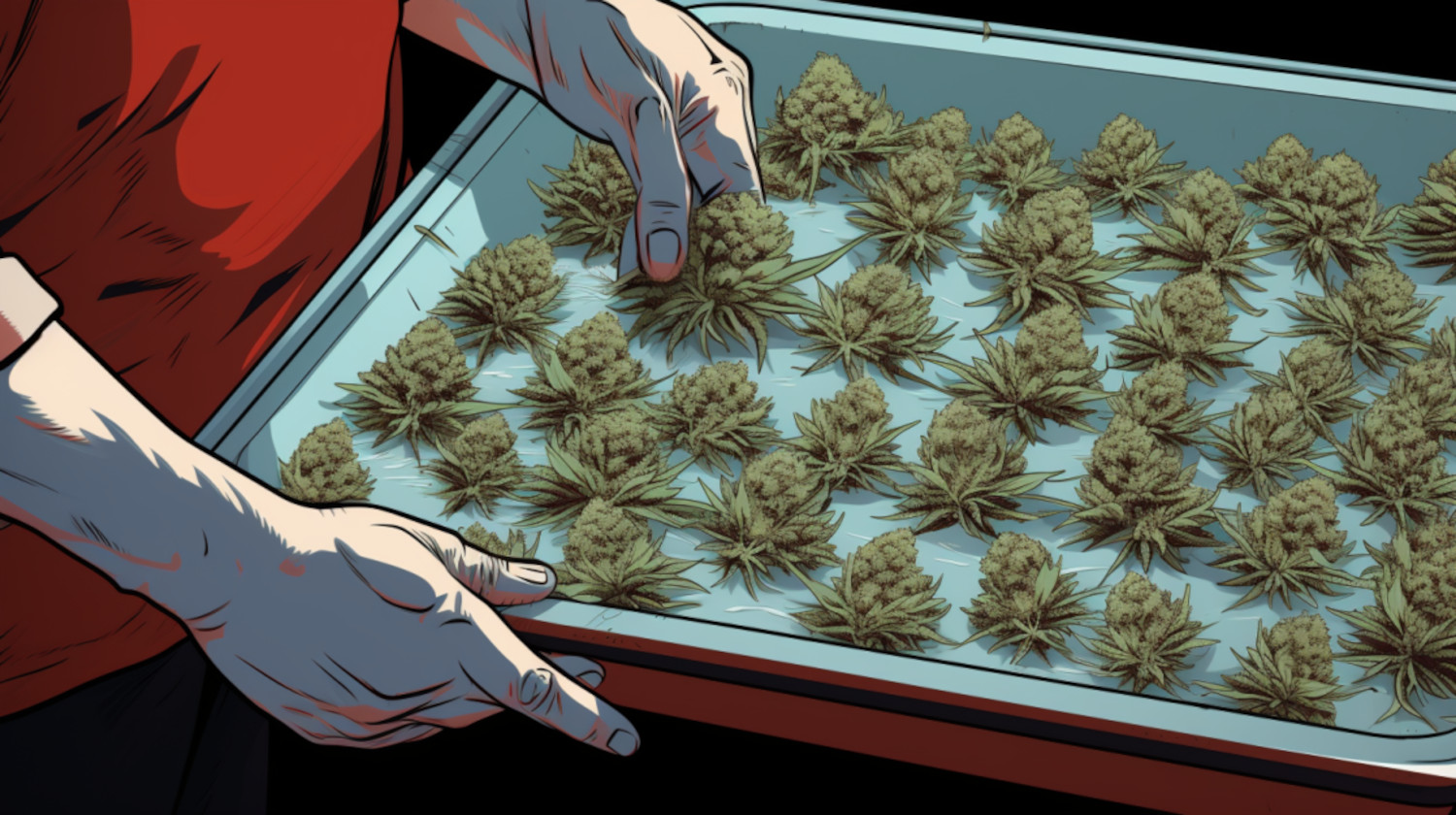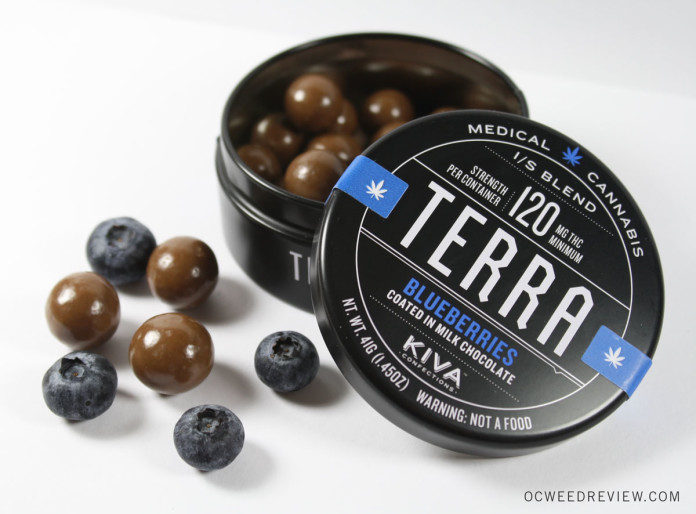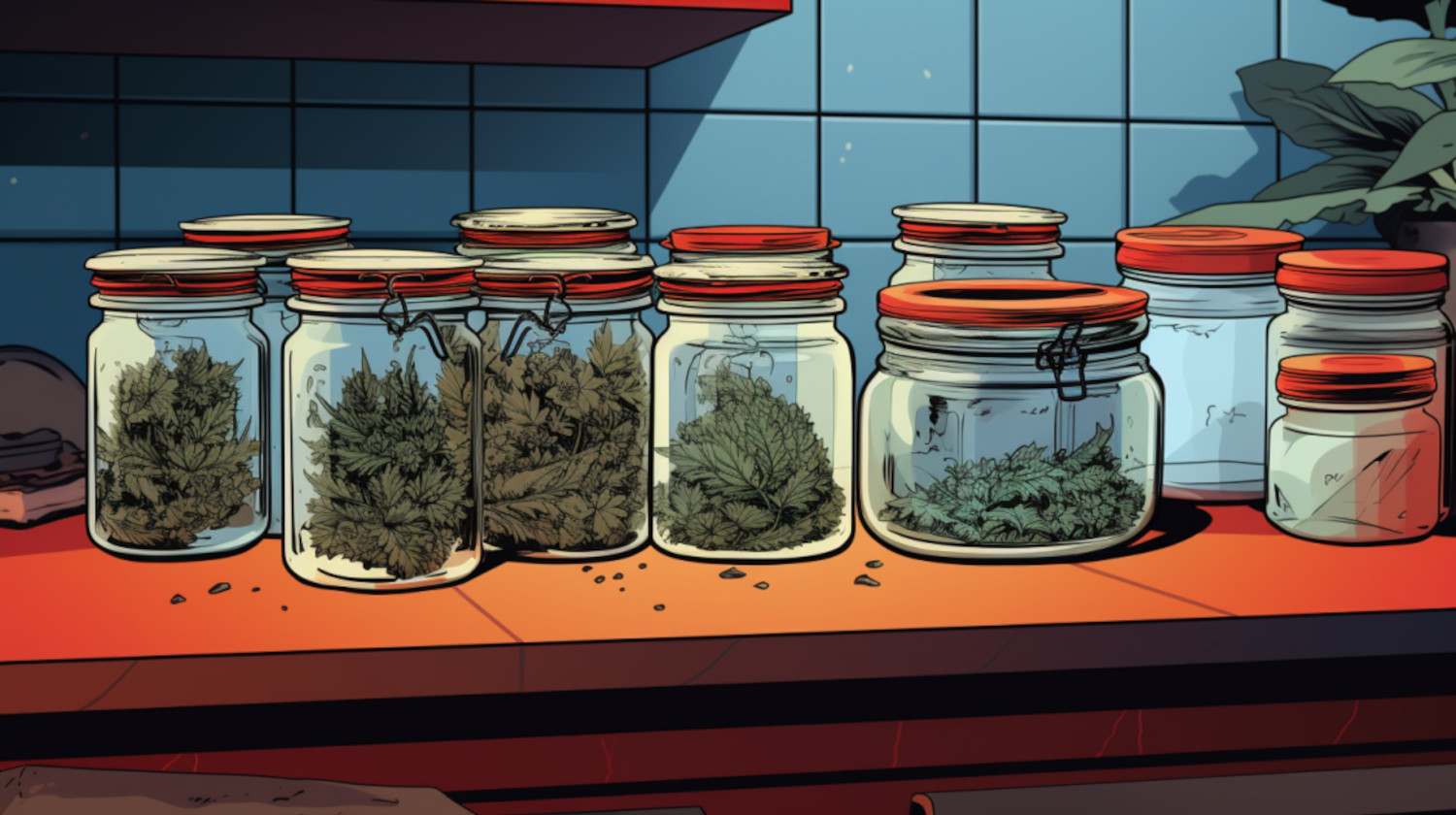In This Article
- Can Eating Raw Weed Get You High?
- What are the Risks of Eating Raw Cannabis?
- What are the Health Benefits of Eating Raw Cannabis?
- How Can You Use Raw Weed?
- What would happen if I ate a bud of weed?
- Can I cook raw weed?
- Can you eat cannabis resin raw?
- If I put weed in the oven before I eat it, will I get high?
- Does raw weed contain calories?
- Can you juice weed?
- Can I include raw cannabis as part of a dish?
- Can pets eat raw weed?
- How can I store cannabis if I’m going to eat it?
- Can raw cannabis expire?
- What happens if you eat cannabis before it’s been decarboxylated?
- How much raw weed can I eat?
- References
Cannabis can be consumed in many different forms. One of the most popular of the available forms is edibles. Edibles are a great choice because they make it easy to control the dosage, can be made at home, and come in a variety of different flavors. If you’re new to cannabis, then consider if edibles could be the right method of consumption for you.
When it comes to talking about edibles, some people wonder about eating cannabis. Eating raw cannabis isn’t the same as eating an edible; in fact, it’s a very different thing. Before considering tossing some raw cannabis flowers in a salad, it's a good idea to know some of the science behind consuming cannabis.
Can Eating Raw Weed Get You High?
There are so many different methods of consumption when it comes to cannabis, but can eating weed get you high?
When you buy an edible from a dispensary, the weed in it has gone through a process called decarboxylation. Through the decarboxylation process, the chemicals in cannabis are transformed into ones that can cause the plant's trademark 'high.'1
Raw cannabis will contain the acid forms of each cannabinoid present in a strain, from THCA, CBDA, and CBGA to THCVA and CBDVA. THCA is a cannabinoid acid present in raw cannabis flowers, and it is not intoxicating. Through decarboxylation, THCA becomes THC, the compound responsible for the plant's intoxicating effects.2 The same process works to transform CBDA into CBD, so it’s necessary when discussing edibles.
The decarboxylation process creates the non-acid cannabinoid THC, which is the compound that produces the intoxicating high when it binds to your CB1 receptors in the brain. Because THCA and other acid cannabinoids do not have this same binding affinity for the CB1 receptors in the brain, they will not create any feelings of intoxication like THC can.
In short, no, eating raw weed will not get you high.
What are the Risks of Eating Raw Cannabis?
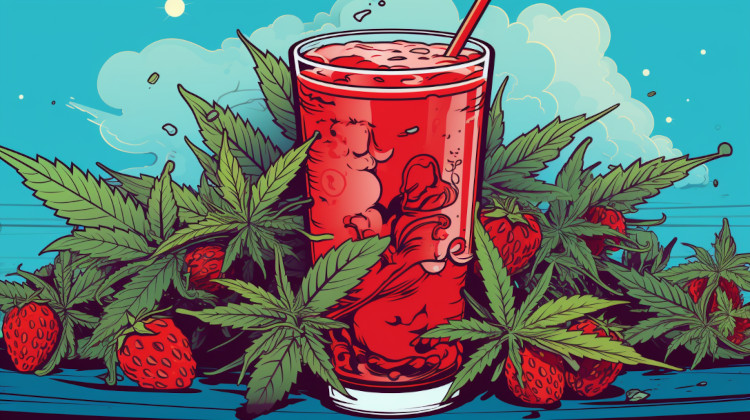
So, what happens if you eat weed? You won’t get high, but THCA has other interesting properties.
There isn’t research that suggests there are significant adverse effects from consuming weed. While this is possible, eating raw weed is not typically recommended. It is possible that there could be some positive health effects that could come from consuming raw weed, but there isn’t significant research to back this up.
One significant risk to mention when it comes to eating raw cannabis is potential contaminants. If you’re going to be consuming raw weed, then it’s important to make sure that it’s washed. One possible way to reduce this risk is to buy from a licensed dispensary that provides lab-tested products and sells reputable, trustworthy brands.
There are some methods of using cannabis that carry more significant risks. One of the forms of cannabis that carries the most risk is smokable products. These products can have a negative effect on the lungs, and they can also accelerate the aging process. If you want to avoid these risks, then it may be best for you to try an edible or topical product.
What are the Health Benefits of Eating Raw Cannabis?
It is possible that some health benefits could come from the cannabinoids that naturally exist in raw cannabis. THCA and CBDA are cannabinoids that exist in raw cannabis. When cannabis undergoes decarboxylation, these compounds become THC and CBD.
THCA and CBDA may have a variety of different health benefits. Research suggests that CBDA can help with nausea, hyperalgesia, and inflammation.3 THCA demonstrates a potential for helping with inflammation and seizures and may also be neuroprotective.4
Some research suggests that these acid cannabinoids, along with other non-THC cannabinoids, may help fight cancer cells.3,4 While the research is promising, there’s a large need for more research in this area.
There are some health benefits that can come from eating raw cannabis, as it can contain protein, fiber, and other nutrients.5,6 If you’re going to consume raw cannabis, it’s best to do some research and understand what recipes will work well for your situation. When in doubt, it’s always best to use a smaller amount of cannabis, as eating a large amount of raw cannabis could cause an upset stomach.
How Can You Use Raw Weed?
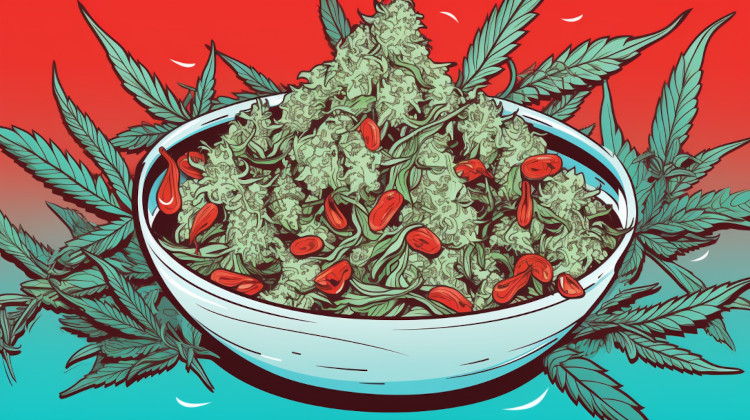
One good practice is to find subtle, small ways to add raw cannabis to your diet. Some people experience digestive issues when they consume large amounts of raw cannabis, so it’s best to start small and find small ways to incorporate it into your diet.
- Salads: Salads are an easy way to incorporate raw cannabis into your diet. You can easily use cannabis as a garnish or incorporate it into a salad dressing. Adding some raw cannabis to your salads can be a unique and unexpected twist, so consider if it could be the right choice for you.
- Juicing: Did you know that you can juice cannabis? If you don’t like the texture of raw cannabis flowers, then juicing can be a great way to get some health benefits.
- Salsas: Adding some cannabis to your next homemade salsa can be fun, and it’s a great way to get some health benefits. If you’re putting some vegetables into your salsa, then why not also add some raw cannabis?
While it is possible to cook with cannabis, many recipes online focus on THC content rather than incorporating cannabis flower for its flavor or nutritional value.
If you’re looking to get the benefits of THCA and CBDA, then it’s important that you buy quality flower. Shopping at a dispensary that tests their flower is the best way to get peace of mind and make sure that you’re being as safe as possible. When you buy cannabis from a source that’s not reputable, there’s no way to be sure what exactly you’re getting – pesticides included.
What would happen if I ate a bud of weed?
If you eat a bud of weed that has not been through the decarboxylation process, you likely will not feel any intoxicating effects unless you have an extreme sensitivity to THC.
Can I cook raw weed?
It is possible to cook raw weed. If your goal of cooking raw weed is for its use to result in a high, then you’ll want to do some research on decarboxylation.
Can you eat cannabis resin raw?
Cannabis resin can refer to several things within the cannabis community. One definition is the resin you may find in your pipe after smoking. Eating this “leftover” resin is not advisable, as it contains high levels of butane from the lighters used to combust it. Another definition is the resinous trichomes that are collected from the buds. Eating this type of resin raw isn't recommended as it may cause an upset stomach, but it can be infused into edibles.
If I put weed in the oven before I eat it, will I get high?
Decarboxylation is a very specific process. It is possible to get high after you put weed in the oven, but it needs to be done in a particular way and at a precise temperature. Simply putting weed in the oven and hoping for the best is typically not the best route for getting high.
Does raw weed contain calories?
Yes, raw weed does contain calories, albeit an extremely small amount.
Can you juice weed?
It is possible to juice cannabis. Remember that you won’t get high from raw cannabis drinks, but some people do enjoy the health benefits that cannabis juice can provide.
Can I include raw cannabis as part of a dish?
It is possible to include raw cannabis as part of a dish. If you do this, it’s most likely best to only include a small portion of weed.
Can pets eat raw weed?
Because raw weed has not been decarboxylated, your pet will not get high from getting into your raw flower. However, your pets should not be consuming cannabis in any form unless recommended by a veterinarian.
How can I store cannabis if I’m going to eat it?
We offer a guide on how to store cannabis. One of the most important things to do is to make sure that the cannabis is kept in a safe place away from children and pets.
Can raw cannabis expire?
Yes, raw cannabis can expire. If you’ve had a weed bud in your closet for years, it’s most likely best to skip that and buy a new flower.
What happens if you eat cannabis before it’s been decarboxylated?
If you eat cannabis before the decarboxylation process has been completed, then you likely won’t get high. However, you may get some health benefits.
How much raw weed can I eat?
If you’re going to be eating raw weed, then it’s most likely best to only consume small amounts at a time to avoid any potential digestive issues.
References
- Wang, Mei, Yan-Hong Wang, Bharathi Avula, Mohamed M. Radwan, Amira S. Wanas, John van Antwerp, Jon F. Parcher, Mahmoud A. ElSohly, and Ikhlas A. Khan. 2016. “Decarboxylation Study of Acidic Cannabinoids: A Novel Approach Using Ultra-High-Performance Supercritical Fluid Chromatography/Photodiode Array-Mass Spectrometry.” Cannabis and Cannabinoid Research 1 (1): 262–71. https://doi.org/10.1089/can.2016.0020.
↩︎ - Moreno-Sanz G. Can You Pass the Acid Test? Critical Review and Novel Therapeutic Perspectives of Δ9-Tetrahydrocannabinolic Acid A. Cannabis and Cannabinoid Research. 2016;1(1):124-130. doi:https://doi.org/10.1089/can.2016.0008
↩︎ - Formato M, Crescente G, Scognamiglio M, et al. (‒)-Cannabidiolic Acid, a Still Overlooked Bioactive Compound: An Introductory Review and Preliminary Research. Molecules. 2020;25(11):2638. Published 2020 Jun 5. doi:10.3390/molecules25112638
↩︎ - Walsh Z, Gonzalez R, Crosby K, S. Thiessen M, Carroll C, Bonn-Miller MO. Medical cannabis and mental health: A guided systematic review. Clinical Psychology Review. 2017;51:15-29. doi:https://doi.org/10.1016/j.cpr.2016.10.002
↩︎ - Audu BS, Ofojekwu PC, Ujah A, Ajima MNO. Phytochemical, proximate composition, amino acid profile and characterization of Marijuana (Cannabis sativa L.). The Journal of Phytopharmacology. 2014;3(1):35-43. doi:https://doi.org/10.31254/phyto.2014.3106
↩︎ - Iftikhar A, Zafar U, Ahmed W, et al. Applications of Cannabis Sativa L. in Food and Its Therapeutic Potential: From a Prohibited Drug to a Nutritional Supplement. Molecules. 2021;26(24):7699. Published 2021 Dec 20. doi:10.3390/molecules26247699
↩︎
The information in this article and any included images or charts are for educational purposes only. This information is neither a substitute for, nor does it replace, professional legal advice or medical advice, diagnosis, or treatment. If you have any concerns or questions about laws, regulations, or your health, you should always consult with an attorney, physician or other licensed professional.

